
npj Quantum Materials
Scope & Guideline
Exploring the Frontiers of Quantum Innovation
Introduction
Aims and Scopes
- Quantum Materials Research:
The journal focuses on the study of quantum materials, including their electronic, magnetic, and structural properties, with an emphasis on understanding phenomena such as superconductivity, magnetism, and topological states. - Interdisciplinary Approaches:
Research published in the journal often employs a variety of methodologies, including theoretical modeling, computational simulations, and advanced experimental techniques such as spectroscopy and microscopy. - Emerging Phenomena:
The journal highlights the exploration of new and unconventional phenomena in quantum materials, including but not limited to topological phases, charge density waves, and novel superconducting states. - Material Synthesis and Characterization:
There is a strong emphasis on the synthesis of new quantum materials and their detailed characterization to understand their fundamental properties and potential applications. - Spintronics and Quantum Computing:
Research related to spintronics, quantum information, and the development of materials for quantum computing is a significant focus area, reflecting the journal's commitment to advancing technologies in the quantum realm.
Trending and Emerging
- Topological Phases and Materials:
There is a significant increase in research related to topological materials, including topological insulators and superconductors, which are pivotal for future quantum technologies. - Kagome and Frustrated Magnetism:
The study of kagome lattice systems and frustrated magnets is trending, as these materials exhibit exotic magnetic phenomena and intriguing quantum states. - Quantum Spin Liquids:
Research into quantum spin liquids is on the rise, focusing on their unique properties and potential applications in quantum computing and information. - 2D Materials and Heterostructures:
The exploration of two-dimensional materials and their heterostructures is gaining momentum, driven by their novel electronic and optical properties. - Non-equilibrium Dynamics and Quantum Coherence:
There is an emerging interest in understanding non-equilibrium dynamics and quantum coherence phenomena in various quantum materials, which could lead to advancements in quantum technologies.
Declining or Waning
- Traditional Superconductivity:
There has been a noticeable shift away from conventional superconductivity studies towards more exotic forms of superconductivity, such as topological and unconventional superconductors. - Classical Magnetic Materials:
Research on classical magnetic materials and their properties seems to be less prevalent, as the emphasis has shifted towards quantum magnets and novel magnetic phenomena. - Standard Characterization Techniques:
There is a decreasing trend in the use of traditional characterization techniques, as newer, more advanced methods that provide deeper insights into quantum materials are being favored. - Bulk Materials Studies:
The focus has moved from bulk material studies to more intricate investigations of low-dimensional systems, interfaces, and heterostructures, indicating a waning interest in the bulk properties of materials. - Thermal Properties of Materials:
Research specifically focused on the thermal properties of quantum materials appears to be less prominent, potentially overshadowed by more pressing topics such as electronic and magnetic properties.
Similar Journals

JETP LETTERS
Illuminating the Frontiers of Physics and AstronomyJETP LETTERS, published by MAIK NAUKA/INTERPERIODICA/SPRINGER, is a prestigious journal in the field of physics and astronomy, which plays a pivotal role in disseminating groundbreaking research and innovative ideas since its inception in 1969. With an ISSN of 0021-3640 and an E-ISSN of 1090-6487, this journal aligns well with the interests of both seasoned researchers and emerging scholars, having achieved a 2023 category rank of Q3 for miscellaneous topics within physics and astronomy. Located in the United States at 233 SPRING ST, NEW YORK, NY 10013-1578, JETP LETTERS serves as a critical resource for its readership, offering exclusive insights and advancements across diverse areas of physics. While not open access, it hosts a collection of articles that refine theoretical approaches and experimental methods, providing both knowledge and inspiration to professionals and academics seeking to make impactful contributions to the scientific community. The journal’s quality is reflected in its Scopus ranking, where it stands at 39 out of 81 in the multidisciplinary category, placing it in the 52nd percentile, thus underscoring its significance and reliability as a scholarly outlet.

REVISTA MEXICANA DE FISICA
Pioneering Insights in Physics and Educational MethodologiesREVISTA MEXICANA DE FISICA is a prominent academic journal dedicated to advancing knowledge in the fields of Physics and Education. Published by the SOC MEXICANA FISICA, this journal plays a pivotal role in disseminating innovative research and educational methodologies from Mexico and beyond. With a publication history that spans from 1991 to 2024, it has established itself as an essential resource for researchers, professionals, and students who seek to deepen their understanding of general physics and astronomy. The journal is classified in the Q3 quartile in both education and physics & astronomy, showcasing its quality and relevance within the academic landscape. While the journal currently operates on a subscription basis, it provides a valuable platform for emerging voices and established scholars alike. By fostering a collaborative environment for scientific discourse, REVISTA MEXICANA DE FISICA continues to be an important channel for the ongoing evolution of scientific education and exploration in the physical sciences.
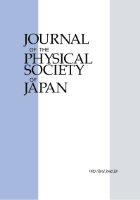
JOURNAL OF THE PHYSICAL SOCIETY OF JAPAN
Empowering Scholars through Cutting-edge DiscoveriesThe JOURNAL OF THE PHYSICAL SOCIETY OF JAPAN, published by the Physical Society of Japan, has been at the forefront of advancing knowledge in the field of Physics and Astronomy since its inception in 1946. With a commendable reputation reflected in its Q2 ranking within its category for 2023, this journal serves as a vital platform for disseminating high-quality research and innovative concepts. Researchers and professionals alike can engage with cutting-edge studies and reviews that span a diverse range of topics pivotal to the physical sciences. Although the journal does not currently operate with an open access model, it maintains a robust impact on the global physics community, evidenced by its placement in the 59th percentile among a competitive pool of 243 journals. With an unwavering commitment to bridging theory and application, the JOURNAL OF THE PHYSICAL SOCIETY OF JAPAN continues to inspire and cultivate scholarly discourse and collaboration across disciplines.
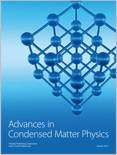
Advances in Condensed Matter Physics
Advancing Knowledge in Quantum Materials and BeyondAdvances in Condensed Matter Physics is a distinguished journal published by HINDAWI LTD, dedicated to the rapid dissemination of high-quality research in the field of condensed matter physics. Since its inception in 2008, this Open Access journal has facilitated wide accessibility to cutting-edge findings and theoretical advancements, with aims to foster collaboration and innovation within the scientific community. With an ISSN of 1687-8108 and an E-ISSN of 1687-8124, the journal covers an extensive range of topics, from quantum materials to nanotechnology, ensuring relevance and engagement across various sub-disciplines. As a testament to its impact in the field, it is ranked in the Q3 category for 2023 within Scopus and holds a position in the 34th percentile for physics and astronomy. The journal's continuous commitment to publishing significant exploratory research until 2024 makes it a pivotal resource for researchers, professionals, and students eager to stay on the leading edge of condensed matter physics advancements.
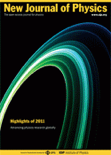
NEW JOURNAL OF PHYSICS
Transforming research into accessible knowledge for all.NEW JOURNAL OF PHYSICS, published by IOP Publishing Ltd, is a prestigious open-access journal that has been at the forefront of the physics community since its inception in 1998. With an impact factor that places it in the Q1 category of Physics and Astronomy (miscellaneous) and a commendable ranking of #49 out of 243 in the general physics and astronomy category according to Scopus, this journal is recognized for its significant contribution to advancing research in the field. The journal caters to a broad scope of topics, providing a platform for the dissemination of cutting-edge research findings and innovative theoretical explorations. Operating from the United Kingdom, it offers a truly international perspective, making its contents accessible and impactful to a global audience. With robust open-access options, the NEW JOURNAL OF PHYSICS ensures that research findings are freely available, promoting collaboration and knowledge sharing among researchers, professionals, and students alike. This commitment to accessibility, combined with its high-quality content, makes it an essential resource for anyone engaged in the physics community.

Science China-Physics Mechanics & Astronomy
Advancing Knowledge in Physics and AstronomyScience China-Physics Mechanics & Astronomy, published by SCIENCE PRESS, stands as a prestigious journal within the Physics and Astronomy domain, particularly recognized for its contributions to the understanding of fundamental and applied physics. With an exhilarating Q1 ranking in the 2023 category and earning a remarkable scopus rank of #21 out of 243, the journal demonstrates its significant impact, being positioned in the 91st percentile of its field. Operating under an Open Access model, it facilitates the broad dissemination of high-quality research, ensuring accessibility for researchers, professionals, and students worldwide. Its scope covers a variety of essential topics in physics and astronomy, promoting a comprehensive understanding of the latest advancements from 2010 through 2024. The journal is a vital resource for anyone aiming to stay at the forefront of research in these dynamic fields, with its prominent address located in Beijing, China, symbolizing its global influence.
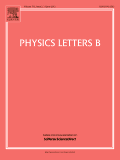
PHYSICS LETTERS B
Pioneering Open Access in High Energy PhysicsPHYSICS LETTERS B, published by Elsevier, is a leading open-access journal in the field of Nuclear and High Energy Physics, with a notable history dating back to 1967 and a commitment to disseminating high-quality research through to 2024. With an impact factor that places it in the Q1 category, ranking 7th out of 87 journals in its subfield (92nd percentile), it serves as an indispensable platform for researchers seeking to share groundbreaking findings and engage with cutting-edge developments. The journal's open-access policy since 2014 ensures that knowledge is widely accessible, fostering collaboration and innovation within the global scientific community. Located in the heart of Amsterdam, the journal not only supports a vibrant discourse among physicists but also contributes significantly to advancing the frontiers of nuclear and high-energy research, making it an essential resource for researchers, professionals, and students alike who are dedicated to shaping the future of physics.
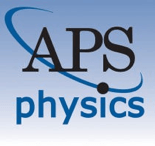
Physical Review X
Advancing the Frontiers of Physics and AstronomyPhysical Review X is a premier open-access journal published by the American Physical Society, dedicated to advancing the frontiers of knowledge in the field of physics and astronomy. Established in 2011, it has quickly gained recognition for its rigorous peer-review process and high-quality research contributions, achieving an impressive impact factor that solidifies its position in the top quartile (Q1) of its category for 2023. With a Scopus rank of #8 out of 243 in the general physics and astronomy division, it stands in the 96th percentile, showcasing its vital role in disseminating groundbreaking discoveries and theoretical insights across diverse physics domains. As an open-access journal, Physical Review X ensures that research is freely accessible to a global audience, fostering collaboration and innovation. Researchers, professionals, and students alike are invited to explore its extensive archive and contribute to the ongoing dialogue in the scientific community, empowering the next generation of physicists and astronomers.
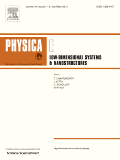
PHYSICA E-LOW-DIMENSIONAL SYSTEMS & NANOSTRUCTURES
Connecting researchers to the evolving landscape of nanotechnology.PHYSICA E-LOW-DIMENSIONAL SYSTEMS & NANOSTRUCTURES, published by ELSEVIER, is a premier journal dedicated to advancing the field of condensed matter and nanoscience, focusing on the innovative properties and applications of low-dimensional systems. With an esteemed Q2 ranking in multiple categories including Atomic and Molecular Physics, Condensed Matter Physics, and Nanoscience for 2023, this journal serves as a vital platform for researchers and professionals aiming to disseminate and discuss cutting-edge research. Established in 1974 and converging its focus from 1997 onwards, PHYSICA E captures the evolving landscape of material science, making it a crucial resource for anyone invested in the dynamics of electronic, optical, and magnetic materials. Although the journal operates on a subscription basis, its broad accessibility and significant placement within Scopus rankings—such as being in the 83rd percentile for Condensed Matter Physics—underscore its importance within the academic community. Researchers and students alike will find this journal a cornerstone for fostering knowledge and collaboration in the fields of nanotechnology and low-dimensional physics.

ACTA PHYSICA SINICA
Championing Quality Research in Physics and BeyondACTA PHYSICA SINICA is a prominent journal published by the Chinese Physical Society, dedicated to the dissemination of groundbreaking research in the field of physics and astronomy. Established in 1993, this journal has consistently contributed to the scientific community by publishing high-quality articles that cover a wide range of topics within general physics and related disciplines. Although currently classified in Q4 of the physics and astronomy category by Scopus, ACTA PHYSICA SINICA plays an important role in fostering collaboration and communication among researchers in China and around the world. With a substantial readership, this journal is poised to remain a valuable resource for professionals, researchers, and students alike. By providing in-depth analysis and insights, it aims to advance the understanding and application of physical principles in various technological and scientific advancements. The journal is accessible via subscription, ensuring that contributors and readers can engage with the evolving landscape of physics research. For more information, visit the publisher's website.